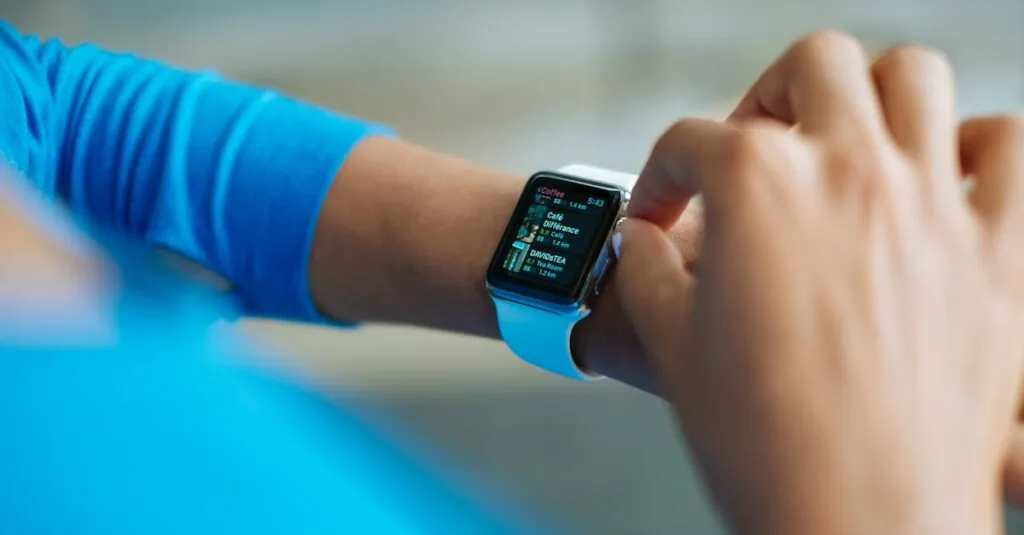In a world where a simple selfie drone can cost less than a fancy dinner, the realm of high-end drones takes luxury to new heights—literally. Picture this: drones that could probably fly themselves to a five-star resort while you sip a piña colada on the beach. These aren’t just toys; they’re the Ferraris of the sky, equipped with features that make James Bond’s gadgets look like child’s play.
From military-grade technology to cinematic masterpieces, the most expensive drones redefine what’s possible in aerial innovation. If you think your drone is cool, wait until you see what a six-figure price tag can get you. Buckle up as we dive into the fascinating world of these sky-high marvels that are as impressive as they are pricey.
Table of Contents
ToggleOverview of Most Expensive Drones
High-end drones showcase cutting-edge technology with features that demand significant investments. Advanced imaging systems, robust materials, and enhanced flight capabilities characterize these drones, positioning them far away from typical consumer models.
Prices for these premium drones can reach several hundred thousand dollars, reflecting their sophisticated engineering and design. For instance, the DJI Agras MG-1P offers precision agriculture capabilities, costing around $15,000, while the Lockheed Martin RQ-170 Sentinel, a military drone, is valued at over $6 million due to its top-secret technology.
Specifications for these drones often include high-resolution cameras, extended flight times, and advanced obstacle avoidance systems. Many of these devices also feature autopilot capabilities, ensuring efficient operations in various environments. Industries such as filmmaking, surveying, and defense often utilize these expensive drones for their unparalleled performance and reliability.
Innovations such as real-time data transmission and enhanced battery life exemplify the advancements found in these machines. Drones like the Aeryon SkyRanger R70, costing roughly $75,000, integrate sophisticated software with powerful hardware for tactical applications.
Recognizing the underlying value in these expensive drones requires understanding their multifaceted applications and range of benefits. Essential for professionals, these drones offer a level of performance that mere hobbyist models cannot match. Prices, features, and unique applications contribute to the allure of the most expensive drones on the market.
Top Contenders in the Market
High-end drones represent the pinnacle of innovation and capability in the aerial technology sector. The following categories showcase some of the most expensive options available today.
Military Drones
Operational efficiency characterizes military drones, with models like the Northrop Grumman Global Hawk priced around $220 million. This drone excels in surveillance and reconnaissance missions, offering continuous, high-altitude flight. Its capability to gather real-time intelligence makes it invaluable to defense strategies. Additionally, the MQ-9 Reaper, valued at approximately $16 million, combines missile capabilities with advanced sensors. Such drones play a critical role in modern warfare, providing strategic advantages through technological supremacy.
Commercial Drones
Commercial drones serve a variety of sectors, including agriculture, real estate, and filmmaking. The DJI Matrice 600, costing about $5,000, features advanced stabilization for aerial cinematography. Enhanced data collection capabilities highlight its importance in surveying and mapping. The senseFly eBee X, priced near $18,000, supports large-scale agricultural assessments with its precise aerial imagery. As businesses increasingly adopt drone technology for efficient operations, premium commercial models become vital tools for productivity.
Consumer Drones
Although they cater to individual users, high-end consumer drones still command significant prices. The DJI Mavic 3, retailing at approximately $2,200, offers 5.1K video quality and impressive flight time. Its compact design caters to hobbyists and professional photographers alike. In contrast, the Autel Robotics EVO Lite+, priced around $1,000, brings industry-grade features within reach for enthusiasts. Consumers now enjoy access to advanced features, previously reserved for professional operators, boosting the popularity of expensive drones in the market.
Features That Drive Up Costs
Many features contribute to the high price of drones. Understanding these elements reveals why certain aerial devices command such significant investments.
Advanced Technology
Advanced technology stands out as a primary factor. High-end drones often include sophisticated sensors and powerful processors. These advancements enable features like real-time data transmission and enhanced flight stability. Models such as the Lockheed Martin RQ-170 Sentinel utilize military-grade technology, enhancing surveillance and reconnaissance abilities. Aerial devices equipped with 4K and 8K cameras provide exceptional image quality for filmmakers and engineers. These technological upgrades significantly increase manufacturing costs.
Build Quality and Materials
Build quality and material choices play a crucial role in pricing. Premium drones use high-strength materials such as carbon fiber and aerospace-grade aluminum for durability. Enhanced construction techniques ensure resilience against harsh environmental conditions. The DJI Matrice 600 exemplifies high build quality, designed for professional-grade applications. Longevity substantially impacts long-term operational costs, making these investments worthwhile for commercial and military users. Each component’s quality directly correlates to the device’s price tag.
Special Features and Capabilities
Special features and capabilities elevate functionality and drive costs higher. Drones with obstacle avoidance systems enhance safety during flight. Additionally, automation features allow for sophisticated flight paths and mission planning. Some high-end models offer programmable payload options for unique applications, such as crop spraying or surveying. Extended battery life also contributes to operational effectiveness, enabling longer flight times without frequent recharges. Such advanced capabilities justify the premium prices associated with these elite drones.
Market Trends and Future Predictions
High-end drone markets are poised for significant growth, driven by advancements in technology and increasing adoption in various industries. Many reports indicate a compound annual growth rate (CAGR) exceeding 20% over the next five years. Factors contributing to this trend include the rising demand for precision agriculture and enhanced surveillance capabilities in military applications.
Emerging technologies are reshaping the landscape of expensive drones. Innovations such as Artificial Intelligence (AI) and machine learning are enhancing automation features, which improve operational efficiency. Notably, drones equipped with AI-driven analytics can interpret data faster, providing users with actionable insights in real-time.
Increasing regulations around drone usage are another notable trend. Governments worldwide focus on safety and airspace management, leading to stricter licensing and operational guidelines. Compliance with these regulations is becoming crucial for manufacturers and operators alike, as proper certification ensures commercial viability.
Future predictions suggest that military drones, especially models like the Northrop Grumman Global Hawk, will continue commanding high prices and demand, given their unmatched surveillance capabilities. Additionally, commercial sectors, especially filmmaking and agriculture, will likely expand their use of advanced drones such as the DJI Matrice 600, which facilitate superior data collection and enhance productivity.
Consumer drone markets are also maturing, as devices become more accessible. High-end offerings, such as the DJI Mavic 3, cater to both enthusiasts and professionals, blending affordability with advanced features. Positioning in the market appears to focus on delivering high-quality experience at competitive prices, establishing a bridge between luxury and practicality.
Industry experts anticipate continued innovation in materials used for high-end drones. Usage of lightweight, durable materials like carbon fiber will likely enhance performance and longevity. As demand for cutting-edge technology grows, expensive drones will become pivotal in transforming how various sectors operate and compete.
The realm of high-end drones showcases a remarkable intersection of technology and functionality. These advanced machines are not just tools but transformative assets across various industries. As innovations continue to emerge the capabilities of these drones will only expand, further enhancing their appeal and utility.
With significant investments in research and development the future looks promising for both commercial and military applications. As these drones become more accessible to consumers the landscape of aerial technology will continue to evolve. The journey into the world of expensive drones reveals a fascinating blend of luxury and practicality that’s set to redefine how we perceive aerial capabilities.





